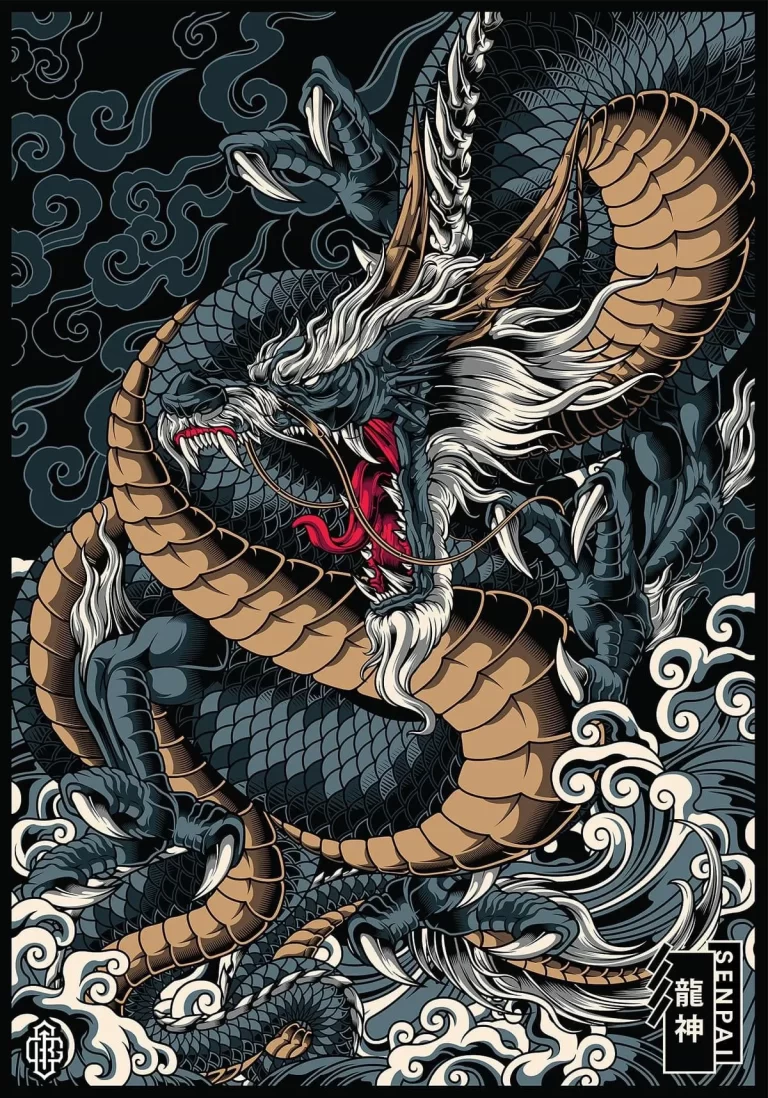Gorynych: The Legendary Three-Headed Dragon of Russian Folklore

Introduction to Gorynych, the Three-Headed Dragon of Russian Folklore
In the vast tapestry of Russian folklore, one creature towers above others in both power and fearsome reputation: Gorynych, the three-headed dragon. Known for his terrifying presence, fire-breathing abilities, and formidable size, Gorynych has captivated imaginations for centuries. Often portrayed as a fearsome guardian of treasures or a formidable foe to noble heroes, Gorynych represents more than just a dragon—he embodies the eternal struggle between good and evil, courage and fear, resilience and surrender. But who, or what, exactly is Gorynych, and why has he remained such a beloved figure in Russian folklore?
Who is Gorynych?
Gorynych, also known as Zmey Gorynych, is a mythical dragon with three heads, each spewing fire and venom. The name “Gorynych” is derived from the Russian word “gora,” meaning “mountain,” reflecting his immense size and power. As with many legendary creatures, Gorynych’s appearance varies across tales, but he is universally depicted as a terrifying creature with three heads, razor-sharp teeth, and a body strong enough to crush armies.
Gorynych in Russian Folklore
Russian folklore portrays Gorynych as a formidable enemy of knights and heroes, particularly the famous bogatyrs, Russia’s equivalent of medieval knights. While some dragons in mythology are neutral or even friendly, Gorynych is typically associated with destruction and chaos. In these tales, Gorynych guards bridges, kidnaps princesses, and menaces villages. Often, his presence serves as a test of bravery and skill for young heroes, who must confront him to rescue loved ones or defend their lands.
A Famous Adversary: Dobrynya Nikitich
One of Gorynych’s most famous battles is against Dobrynya Nikitich, a renowned bogatyr and one of Russia’s most celebrated folk heroes. In this story, Dobrynya is tasked with rescuing the niece of Prince Vladimir of Kiev, who has been kidnapped by Gorynych. With his mighty sword and unparalleled bravery, Dobrynya engages in an epic battle with the dragon, fighting tirelessly against Gorynych’s three heads. After a fierce struggle, Dobrynya ultimately prevails, freeing the captive and ending Gorynych’s reign of terror.
The Symbolism of Gorynych
In Russian folklore, Gorynych is often a representation of nature’s uncontrollable and destructive forces. His three heads can symbolize a multitude of meanings: greed, wrath, and the insatiable hunger for power. Alternatively, the three heads might represent different realms of existence—earth, sky, and underworld—emphasizing his role as a guardian of thresholds and passages.
Gorynych also serves as a symbol of the challenges that heroes must face. The journey to defeat Gorynych is often seen as a test of strength, wit, and perseverance. His depiction as a near-invincible foe underscores the resilience and courage required to confront the seemingly insurmountable.
Gorynych’s Legacy and Modern Interpretations
Today, Gorynych remains a popular figure in Russian literature, film, and art. He appears in fantasy novels, children’s stories, and even animated cartoons, often portrayed with a touch of humor to make his terrifying presence more accessible. In modern adaptations, Gorynych sometimes represents a misunderstood creature rather than a force of pure evil, illustrating a shift in how society views monsters and villains in storytelling.
One of the most fascinating interpretations of Gorynych in contemporary culture is his presence in video games and fantasy role-playing games. As players encounter and battle this three-headed dragon, they’re taking part in a modern reimagining of age-old Russian legends, where Gorynych serves as a powerful antagonist, challenging players to channel their inner Dobrynya Nikitich and prevail against all odds.
Why Does Gorynych Endure?
The lasting appeal of Gorynych lies in his complexity as both a symbol and character. While he is often cast as a villain, Gorynych’s role in folklore touches on universal themes: the battle between good and evil, the importance of courage, and the notion of facing one’s fears head-on. This mythic dragon serves as both a cautionary figure and an inspiration, encouraging audiences to confront life’s obstacles with determination and valor.
Conclusion
Gorynych, the three-headed dragon of Russian folklore, continues to breathe fire into the world of storytelling. From ancient folk tales to modern adaptations, his legend endures as a testament to the timeless power of myth. Through his fearsome visage and indomitable strength, Gorynych reminds us of the challenges that lie before every hero and the bravery required to face them.
Whether he’s guarding treasures, kidnapping princesses, or testing heroes, Gorynych will forever hold a place in Russian folklore. So, the next time you hear the roar of a dragon or see a knight’s silhouette on the horizon, remember Gorynych—and the legacy of courage he leaves in his fiery wake.






